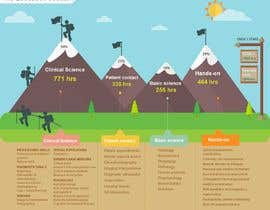Comparing Neck Pain Relief Devices: Massage Therapy Guns Vs. Foam Rollers
Comparing Neck Pain Relief Devices: Massage Therapy Guns Vs. Foam Rollers
Blog Article
Post Written By-Terry Skafte
When choosing in between massage therapy weapons and foam rollers for neck pain alleviation, you could be wondering which device supplies one of the most targeted and effective solution for your pain. While both options have their qualities, the distinct mechanisms of action between massage therapy weapons and foam rollers present appealing indicate consider. Before making your choice, it is vital to understand how each tool can address your certain demands and give ideal relief for your neck pain.
Performance Contrast
When comparing the efficiency of massage weapons and foam rollers for easing neck discomfort, it's important to consider just how each tool targets muscle stress in different ways.
Massage therapy weapons, with their fast percussive activities, penetrate deep into the muscle mass, providing a targeted and extreme massage experience. These tools are specifically efficient at separating muscle knots and releasing stress in details locations of the neck.
Foam rollers, on the other hand, job by utilizing your body weight to apply stress to the muscles as you roll back and forth. While foam rollers can aid with overall muscular tissue relaxation and boost blood circulation, they might not be as efficient at targeting specific areas of muscle tightness in the neck.
Advantages of Massage Guns
Massage weapons use a variety of advantages for individuals looking for relief from neck pain. These innovative devices provide targeted deep tissue massage therapy, aiding to ease muscle tightness and knots in the neck location efficiently. By utilizing back pain symptoms , massage weapons can enhance blood flow to the muscles, minimize swelling, and advertise much faster healing.
The adjustable intensity degrees of massage weapons enable you to tailor the therapy based on your comfort degree and certain pain points. Furthermore, massage guns are convenient and easy to use, making them obtainable for fast relief whenever you require it.
Unlike foam rollers that require you to use your body weight to use pressure, massage weapons do the work for you, making them excellent for people with limited wheelchair or toughness. With their portability and adaptability, massage therapy weapons provide a useful solution for targeting neck discomfort and boosting overall muscle mass health.
Disadvantages of Foam Rollers
Foam rollers, while a preferred selection for self-myofascial release, included their own set of downsides that may not fit everyone seeking relief from neck pain.
One major disadvantage is the level of pain that some individuals experience when making use of foam rollers. The stress used by the roller on specific trigger factors can be extreme and may create pain, especially for those with a reduced pain resistance.
In addition, foam rollers mightn't be suitable for individuals with particular medical problems such as osteoporosis or joint inflammation, as the pressure put in on the bones and joints could worsen their signs and symptoms.
One more restriction is that foam rollers call for physical effort and can be testing to make use of correctly, causing improper methods that could result in more discomfort or injury.
Finally, foam rollers might not offer the same level of targeted relief as massage therapy guns, as they supply extra generalised pressure rather than accurate, targeted treatment.
Conclusion
To conclude, when it concerns targeting certain areas of muscle tightness in the neck for discomfort alleviation, massage guns are much more reliable than foam rollers. With their rapid percussive motions and personalized strength degrees, massage guns permeate deep right into muscular tissues to break up knots and launch stress. While foam rollers use general muscle mass relaxation advantages, they might not give the exact same degree of targeted alleviation. Ultimately, massage weapons are the premium option for dealing with neck discomfort.
